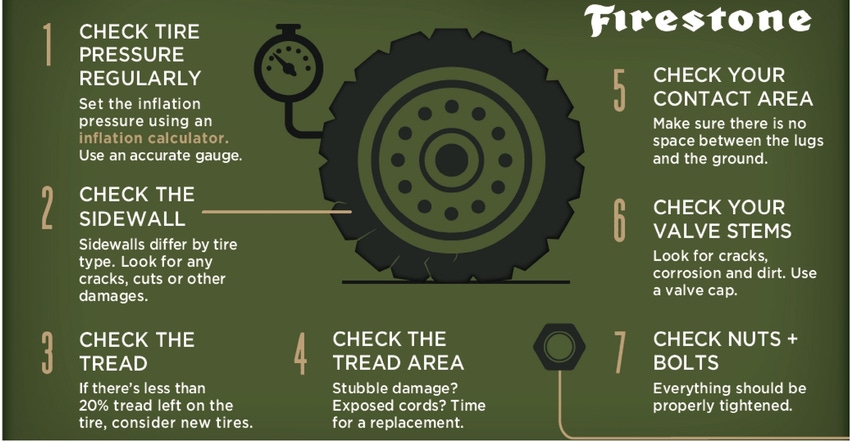August 15, 2018

Sponsored Content
With a busy summer soon coming to an end, most farmers will be spending a significant amount of time prepping their equipment before field operations can begin again this fall. Throughout the preparation process, tires are often forgotten. But, in today's world of agriculture - with larger equipment and heavy loads - running on tires that are not properly cared for can be expensive.
“As a farmer myself, I know that the loads we put our equipment under during harvest is stressful. Going from an empty combine bin or grain cart to a fully loaded one is hard on tires, so it’s absolutely critical to make sure they are in good working order before we get into the field,” said Brad Harris, Firestone Ag Manager of Field Engineering.
To ensure your tires are achieving optimum performance during harvest, it’s just as important to check them as thoroughly as the rest of your equipment. Inspecting your tires is fast, easy, and can increase your profitability when the proper inflation pressure is used. Firestone Ag has created a simple seven step checklist for farmers to check their tires, repair the issues before they result in downtime, and keep them moving in the field once they start:
Check tire pressure regularly – Set the inflation pressure using an inflation calculator and an accurate gauge.
Check the sidewall – Sidewalls differ by tire type. Look for any cracks, cuts or other damages.
Check the tread – If there's less than 20% tread left on your tire, it’s time to get new tires.
Check the tread area- Are you seeing some stubble damage? How about exposed cords? If you answer yes to either of these questions, it is time for a replacement.
Check your contact area – Make sure there is no space between the lugs and the ground.
Check your valve stems – Look for cracks, corrosion and dirt. Use a valve cap.
Check nuts and bolts – Everything should be properly tightened.
Checking inflation pressure is one of the most important steps in the tire check process. Proper inflation pressure increases efficiency, tire service life and ROI, as well as decreases tire wear and fuel costs.
@2018 Bridgestone Americas Tire Operations LLC All Rights Reserved
About the Author(s)
You May Also Like




